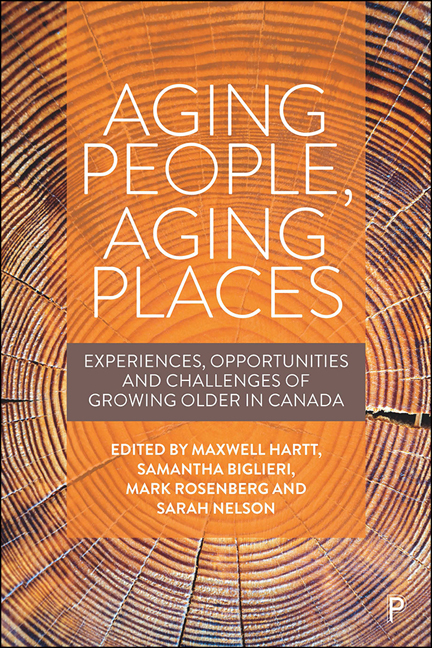4 - Walking in the city: seniors’ experience in Canada and France
Published online by Cambridge University Press: 18 December 2021
Summary
In Canada, as well as in other Western countries, mobility, defined as the ability to move between different activity sites, tends to decrease past 65 years old for all modes of transportation, even if today's elderly are more motorized than before (Armoogum et al, 2010; Turcotte, 2012; Böcker et al, 2017). Accordingly, seniors’ mobility is characterized by a decrease in the number of trips and distances travelled to reach those activity sites (grocery stores, library, friend's home, etc), a situation worsened by the loss of their driving licence (Lord et al, 2009a, 2009b; Chapon, 2010). Moreover, there is little attention given to seniors’ mobility experience outside of the actual, quantitatively measured, travel behaviour (Franke et al, 2019). Walking is therefore essential as an alternative mode of travel to nearby destinations and its promotion is a way to perpetuate seniors’ socialization and greater autonomy, a guarantee of healthy aging. A recent article on accessibility to retail activities in Spain highlighted again the importance of taking into account seniors in our mobility planning. The authors found that willingness to reach retail stores on foot by seniors (>65 years old) was significantly different from other population sub-groups, potentially contributing to social exclusion (Arranz-López et al, 2019). Long neglected to the benefit of the automobile, walking, a non-polluting mode of transport beneficial to health, is today revalorized in urban policies, particularly in major cities. However, this encouragement to walk should be based on an assessment of the safety and comfort of built urban environments in order to better document the (in) adequacy between the walking environment and the needs and travel habits of elderly pedestrians.
Walkability and aging
Research on walkability has been abundant in recent decades, but several authors point out the lack of consensus on the definition of this concept; it is used to encompass all the measurement of the walking environment, including environmental features, but also the experience of pedestrians in such environments (Lo, 2009; Forsyth, 2015). While in North America this concept is linked to a movement seeking to promote physical activity through ‘active’ modes of transport, it is rather seen as a solution for environmental problems (air pollution in cities) in European countries (Huguenin-Richard et al, 2014). The numerous methods found within this body of literature can be categorized under three methodological approaches, some of the research combining them in walkability indexes.
- Type
- Chapter
- Information
- Aging People, Aging PlacesExperiences, Opportunities and Challenges of Growing Older in Canada, pp. 51 - 72Publisher: Bristol University PressPrint publication year: 2021



